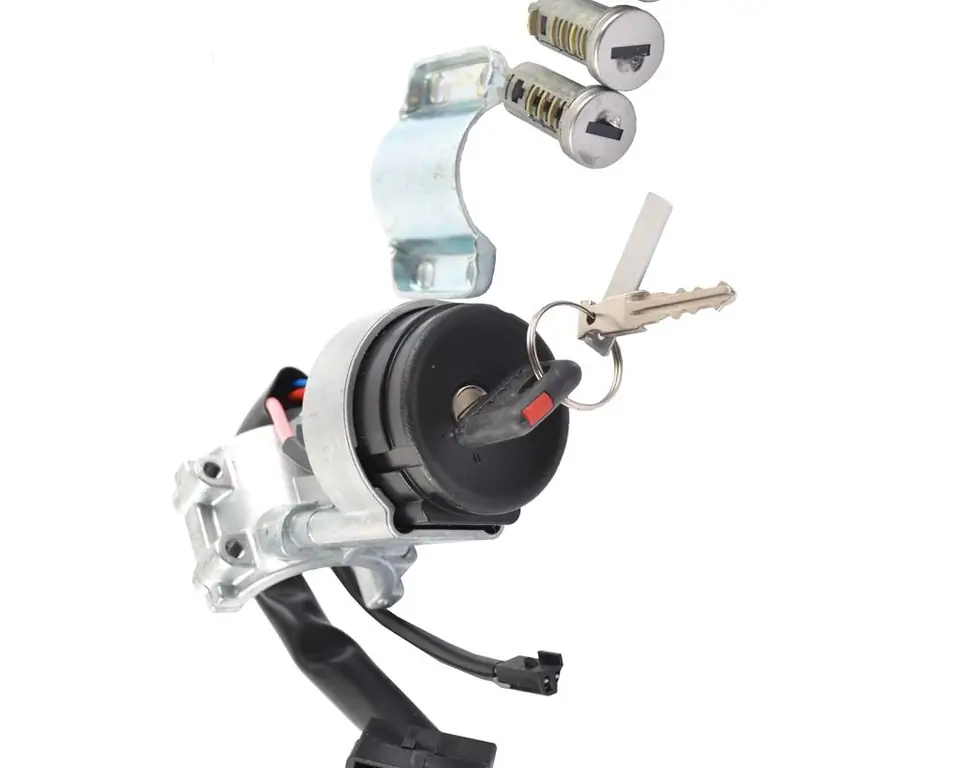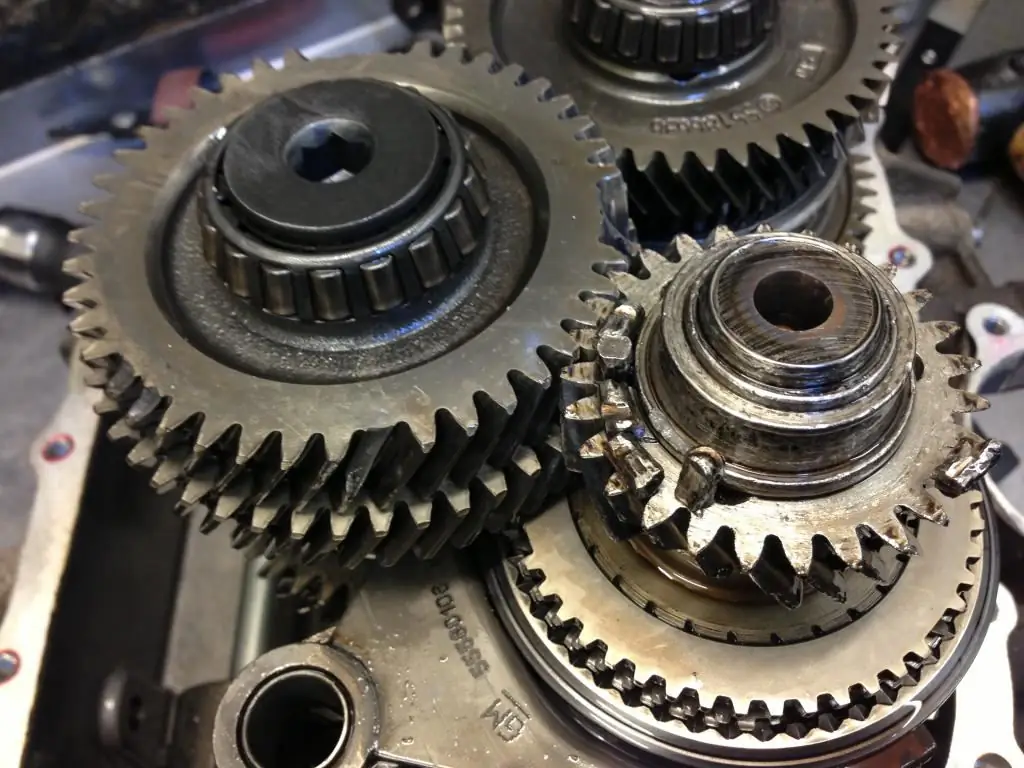2025 Author: Erin Ralphs | [email protected]. Last modified: 2025-01-22 21:14:14
Since ordinary wheels are not suitable for driving on particularly difficult off-road, represented by fragile surfaces, vehicles designed for such conditions are equipped with mechanisms that reduce pressure on the ground. Usually they are represented by low pressure wheels or tracks. Screws are rarely used. The following describes the design, the principle of operation of the machines equipped with them and some of their models.
Definition
Auger all-terrain vehicle, or auger, is a vehicle that moves by using an auger motor. Due to the wide variety of types of surfaces on which such machines can move, they also have some other names.
Design
Rotor screw propeller is usually represented by two Archimedes screws located coaxially with the direction of movement, consisting of high-strength material. This mechanism is an inclined pipe with a screw inside. The screw is created in the form of an inclined plane screwed onto a cylinder.

Probably created by Archimedes in 250 B. C. e. or even earlier, in Greece, these devices were originally designed to raise water into irrigation canals. Much later, in the second half of the 20th century, vehicles appeared in which such mechanisms were installed instead of wheels or tracks. These modern analogues of Archimedean screws are called augers.
Devices used on machines are externally horizontal cylinders ending in cones on both sides. Outside, they are covered with spiral-shaped lugs. Screws are usually made from non-ferrous metals. They are either hollow or filled with some kind of lightweight polymer such as Styrofoam. This results in a low surface pressure, enabling vehicles equipped with them to navigate soft surfaces such as snow and mud, and even water.
Operating principle
The essence of the operation of the engines in question is that when the screws rotate, the lugs are screwed into the surface along the thread. Turning in such a system is organized according to the same principle as in tracked vehicles: the internal auger is slowed down.
Functional qualities
The mechanism under consideration provides high cross-country ability when driving on ice, snow, muddy soils, and also makes it possible to move through water. However, such vehicles are not suitable for movement on hard surfaces like asph alt. However, in off-road conditions, this type of chassis is also not ideal.option, as it significantly damages the surface, including vegetation.
ZIL-4904
This auger all-terrain vehicle was created in 1972. The developer was ZIL. And even before that, he conducted experimental work on such vehicles. So, from 1968 to 1969. an experimental all-terrain vehicle ShN-1 was developed. For the new car, these developments were used.

It was equipped with two ZIL-375 engines with preheaters. This is an 8-cylinder V-shaped engine with a volume of 6.9 liters, developing 180 hp. s., which was also installed on ShN-1. Each of them has its own hydromechanical automatic transmission. Torque is transmitted through the transfer case to the final drive gearbox, which has two outputs. Through them, it enters the final drives, each of which drives the corresponding auger.
Throttle control on the ZIL-4904 was initially carried out by the accelerator pedal, then this function was transferred to the handle. For turning, a system is used, including levers, dry multi-plate clutches and a final drive brake. Band type brakes. The screws are made from light alloy. The diameter of each is 1.5 m, the length is 5.99 m. This auger all-terrain vehicle was equipped with a water pumping system, thus simplifying movement through swamps and water. And on hard roads it was transported on a specialized trailer-tow truck.
The cabin is made of fiberglass to reduce weight, but the watertight casing is made of steel. The cabin housed 3 people, 4 more in the cabin. ZIL-4904 existed inpassenger and cargo options. And one was made from the other. Initially, a glazed fiberglass passenger compartment for 8 seats was installed behind the cabin. Then it was removed, and the vacant cargo platform was covered with an awning. This is how a cargo auger all-terrain vehicle with a carrying capacity of 2-2.5 tons turned out. The dimensions of the hull were 8.575 m in length, 3.6 m in width, 3.44 m in height. Due to this, the ZIL-4904 has become the largest vehicle of this type. Its mass is 7.065 tons.
However, it had very modest dynamic characteristics. Moreover, the speed of movement varied depending on the coverage. This auger all-terrain vehicle moved fastest on snow (10.5 km/h) and on water (10.1 km/h). In the swamp, he could accelerate to 7.3 km / h and moved the slowest along the rafting (4.45 km / h). At the same time, fuel consumption was very high. When driving through a swamp, it reached 65-73 l / 100 km, and on water - 75-85 l / 100 km.

ZIL-2906
This amphibious all-terrain vehicle was developed in 1973 using the design solutions of the above machine. So, for him, they used a similar layout of controls, a transmission scheme, auger material.
Unlike the previous model, which never found use, this machine was originally developed for the search and rescue complex of astronauts, where it is still used today. Since their landing can take place in any terrain conditions, the auger snow and swamp vehicle was considered the best option for such a vehicle.
This car is muchmore compact than its predecessor, since these tasks do not require a high load capacity, but a high speed is needed. Its length is 3.8 m, width - 2.3 m, weight - 1280 kg. There were 2 sitting and 2 reclining places. In view of such a compact size and to reduce weight, as well as to simplify the design, two MeMZ-967A engines with a capacity of 37 liters each were used. With. Each one is mated to a single plate clutch, planetary gear, 3-speed shaft gearbox with reverse gear mounted at 45° to the engine. The maximum speed is 15 km/h.

In 1979, they developed an upgraded version, ZIL-29061. This amphibious all-terrain vehicle has a large body size. The length was increased to 4.86 m, the width - up to 2.39 m. The engines from Zaporozhets were replaced with VAZ engines with a capacity of 77 liters each. With. complete with 4-speed manual transmission. The mass is 1.855 tons. The maximum speed has increased by 10 km/h.

Other models
DAF Amphirol. Created in Holland in 1966, that is, earlier than the Soviet machines discussed above. At the same time, he was much faster than them (on land he could accelerate to 35 km / h) and also moved through the water. However, this amphibious auger was not a factory product, but a private development equipped with a DAF engine

Fordson Snow Devil. The only American production car of this kind by Armstead Snow Motor. It was produced in the 1920s. based on Fordson tractors

ShN-67 "Auger". This is the first auger all-terrain vehicle developed by ZIL, created in 1967. Later, a modernized version of the ShN-68 was developed. Based on these machines, the ZIL-4904 discussed above was created

GPI-16. This model differs in design from the others considered, as it is a motor sled. That is, in the undercarriage, the augers are combined with the skids. This auger all-terrain vehicle was developed by the snowmobile laboratory of the Gorky Polytechnic Institute. There were a lot of his models, but each one was in one copy, and they did not find wide distribution

Snowbird 6. Modern British model, created in 2001. It is a transforming auger, which was designed specifically for the Ice Challenge expedition

MudMaster. Introduced in 2002 by Residue Solutions. Designed to serve irrigation stations in sludge fields, as well as to work in swamps, coastlines, mangrove forests, etc. With this model, Residue Solutions has now become a leader in the production of such machines

Application
Functional qualities determine the purpose: auger propellers are installed on all-terrain vehicles and amphibians for especially difficult conditions. However, due to the destructive effect exerted on the surface, as well as due tohighly specialized, these mechanisms in the field of all-terrain vehicle construction have not found wide application.
Recommended:
"Kia-Sportage": all-wheel drive, principle of operation, specifications and owner reviews

Off-road car "Kia-Sportage" all-wheel drive: description, operation features, exterior, photo. Car with all-wheel drive "Kia-Sportage": technical characteristics, principle of operation, reviews of owners. Description of the SUV "Kia-Sportage"
The principle of operation of the variator. Variator: device and principle of operation

The beginning of the creation of variable programs was laid in the last century. Even then, a Dutch engineer mounted it on a vehicle. After such mechanisms were used on industrial machines
"Lada-Kalina": ignition switch. Device, principle of operation, installation rules, ignition system, advantages, disadvantages and features of operation

Detailed story about the ignition switch Lada Kalina. General information and some technical characteristics are given. The device of the lock and the most frequent malfunctions are considered. The procedure for replacing with your own hands is described
List of malfunctions in which the operation of the vehicle is prohibited. Provisions for the admission of vehicles to operation

The technical safety of a vehicle is the condition of a vehicle in which the risk of damage to it or causing harm to the person who drives it or to other persons is minimized
Planetary gearbox: device, principle of operation, operation and repair

Planetary gears are among the most complex gear boxes. With a small size, the design is characterized by high functionality, which explains its widespread use in technological machines, bicycles and caterpillar vehicles. To date, the planetary gearbox has several design versions, but the basic principles of operation of its modifications remain the same

